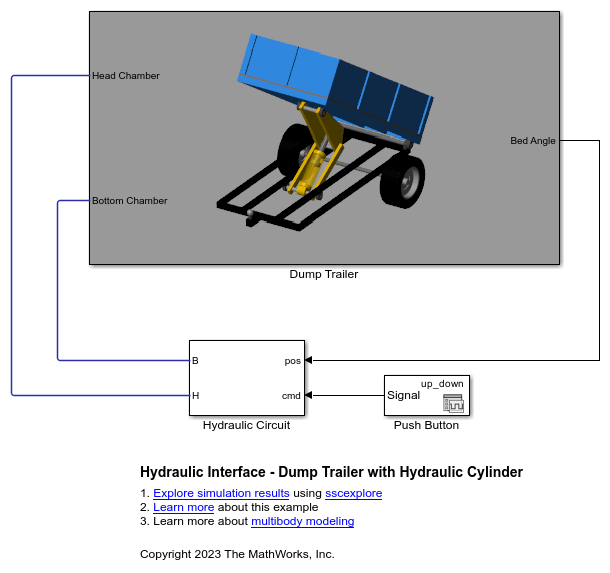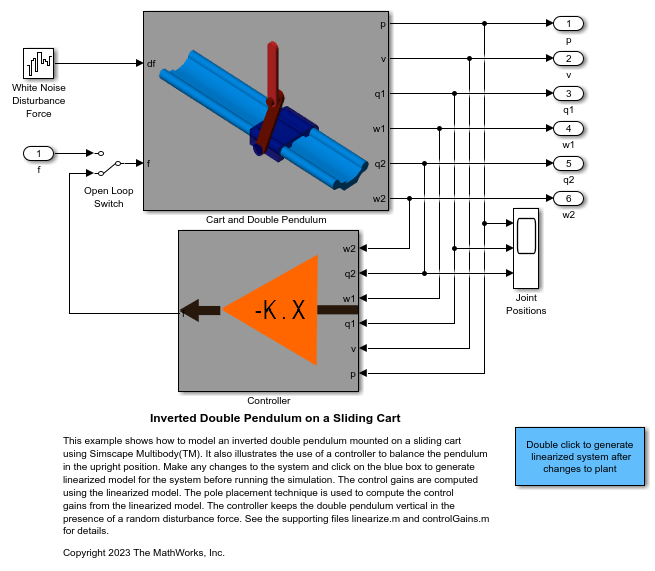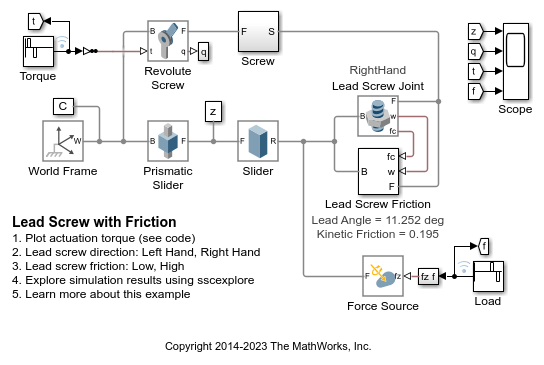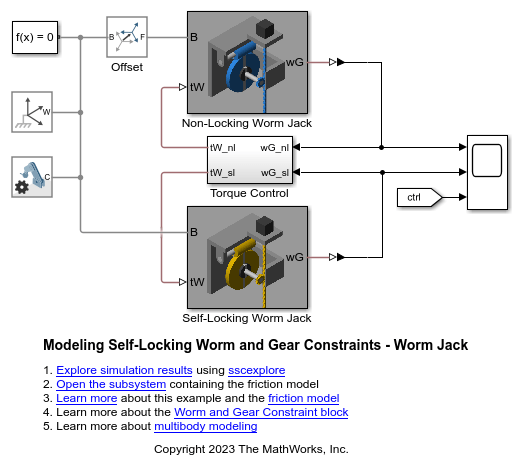멀티바디 동특성
멀티바디 동특성은 조인트로 연결된 강체 또는 유연체로 구성된 기계 시스템의 동적 동작을 연구하는 분야입니다. 이러한 바디는 여기에 가해지는 힘, 토크, 제약 조건에 따라 병진 모션과 회전 모션을 하게 됩니다. Simscape™ Multibody™를 사용하면 로봇, 차량, 건설 장비, 항공기 착륙장치 등의 복잡한 시스템에 대해 멀티바디 동특성 시뮬레이션을 수행할 수 있습니다. 모델을 구동하기 위한 힘, 토크, 모션 입력값을 지정하고 모델의 동적 응답을 시뮬레이션할 수 있습니다.
바디 쌍 사이의 자유도를 지정하려면 Joints 라이브러리와 Constraints 라이브러리의 블록을 사용하십시오. 예를 들어, Prismatic Joint 블록과 Revolute Joint 블록을 사용하여 슬라이더-크랭크 메커니즘의 직선 모션과 회전 모션을 모델링할 수 있습니다. Point on Curve Constraint 블록을 사용하여 롤러코스터 차량과 트랙 사이의 제약 조건을 모델링할 수 있습니다.
바디에 작용하는 힘과 토크를 모델링하려면 Forces and Torques 라이브러리의 블록을 사용하십시오. 예를 들어, Magic Formula Tire Force and Torque 블록을 사용하여 타이어와 지면 사이의 타이어 힘과 토크를 모델링할 수 있습니다. 로봇 파지와 같은 접촉 문제를 모델링할 때는 Spatial Contact Force 블록을 사용하여 바디 쌍 사이의 힘을 시뮬레이션할 수 있습니다.
바디 사이의 상대 운동을 측정하려면 Transform Sensor 블록을 사용할 수 있습니다. 힘과 토크를 측정하려면 Constraints 라이브러리, Joints 라이브러리, Forces and Torques 라이브러리의 블록을 사용할 수 있습니다. Joint 블록에서는 조인트에서 바디에 가해지는 부하를 측정할 수 있으며, Constraint 블록은 바디 쌍 사이의 제약 조건을 유지하는 데 필요한 힘과 토크를 감지할 수 있습니다. 이러한 각 수치를 사용하여 기계 시스템의 멀티바디 동특성을 분석할 때 중요한 질문에 대한 해답을 구할 수 있습니다.
클래스
Simscape 블록
도움말 항목
힘, 토크, 모션 출력값 감지
- Analyze Motion at Various Parameter Values
Simulate a four-bar model at different coupler link lengths and plot the resulting coupler curves. - Sensing
Dynamic variables that you can sense and blocks that you can use to sense them. - Sense Motion Using a Transform Sensor Block
Use the Transform Sensor block to sense frame motion in a simple multibody model. - Measure Joint Constraint Forces
Use the sensing capability of a joint block to sense the internal forces acting on a mechanical link. - Measure Forces and Torques Acting at Joints
Use the sensing capability of joint blocks to measure the forces and torques acting at a joint. - Quasi-Static Analysis of a Robotic Arm in MATLAB
This example demonstrates a workflow for dynamics analysis of a robotic arm in MATLAB.
힘, 토크, 모션 입력값 미리 정의
- Modeling Contact Force Between Two Solids
Use the Spatial Contact Force block to model normal and frictional forces between solid blocks. - Solid Cylinder Rolling Down an Incline
Use the Spatial Contact Force block to model the solid cylinder rolling down a ramp. - Model Gravity in a Planetary System
Assemble a system of gravitationally-bound free bodies using Cartesian Joint and Gravitational Field blocks. - Specify Joint Motion in Planar Manipulator Model
Use the actuation capability of joint blocks to specify the trajectory of frame. - Specify Joint Actuation Torque
Use the actuation capability of a joint block to specify the actuation torque on a joint. - Specify Joint Motion Profile
Use the actuation capability of joint blocks to specify the trajectory of a frame. - Use Contact Proxies to Simulate Contact
Use contact proxies to increase the speed and robustness of contact simulations.
힘과 토크 지정
- Actuating and Sensing with Physical Signals
Using physical signals to specify actuation inputs and obtain sensing outputs. - Joint Actuation Limitations
Restrictions and special considerations for models with motion actuation inputs in joint blocks. - Modeling and Measuring System Dynamics
Workflow steps for setting and sensing dynamic quantities such as force, torque, position, and more. - Modeling Gravity
Modeling the effects of uniform gravity, gravitational fields, and individual gravitational forces. Software definition of body boundaries and its impact on gravitational torques. - Specifying Joint Actuation Inputs
Joint actuation modes, motion input handling, and key differences between model assembly and simulation.
모션, 힘, 토크 감지
- Force and Torque Sensing
Forces and torques that you can sense and the blocks that you can use to sense them. - Selecting a Measurement Frame
Measurement frame definition and summary of measurement frame types. - Motion Sensing
Motion variables that you can sense and the blocks that you can use to sense them. - Rotational Measurements
Rotational motion variables that you can sense and the blocks that you can use to sense them. - Translational Measurements
Translational variables that you can sense and the blocks that you can use to sense them.













